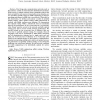Free Online Productivity Tools
i2Speak
i2Symbol
i2OCR
iTex2Img
iWeb2Print
iWeb2Shot
i2Type
iPdf2Split
iPdf2Merge
i2Bopomofo
i2Arabic
i2Style
i2Image
i2PDF
iLatex2Rtf
Sci2ools
JSAC
2007
2007
Partially Optimal Routing
— Most large-scale communication networks, such as the Internet, consist of interconnected administrative domains. While source (or selfish) routing, where transmission follows the least cost path for each source, is reasonable across domains, service providers typically engage in traffic engineering to improve operating performance within their own network. Motivated by this observation, we develop and analyze a model of partially optimal routing, where optimal routing within subnetworks is overlaid with selfish routing across domains. We demonstrate that optimal routing within a subnetwork does not necessarily improve the performance of the overall network. In particular, when Braess’ paradox occurs in the network, partially optimal routing may lead to worse overall network performance. We provide bounds on the worst-case loss of efficiency that can occur due to partially optimal routing. For example, when all congestion costs can be represented by affine latency functions a...
Related Content
| Added | 16 Dec 2010 |
| Updated | 16 Dec 2010 |
| Type | Journal |
| Year | 2007 |
| Where | JSAC |
| Authors | Daron Acemoglu, Ramesh Johari, Asuman E. Ozdaglar |
Comments (0)

